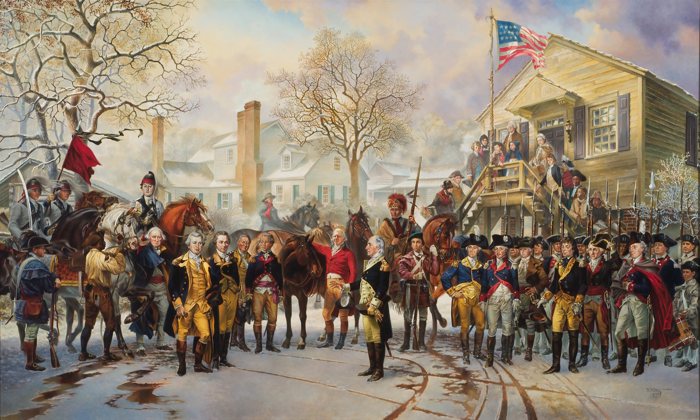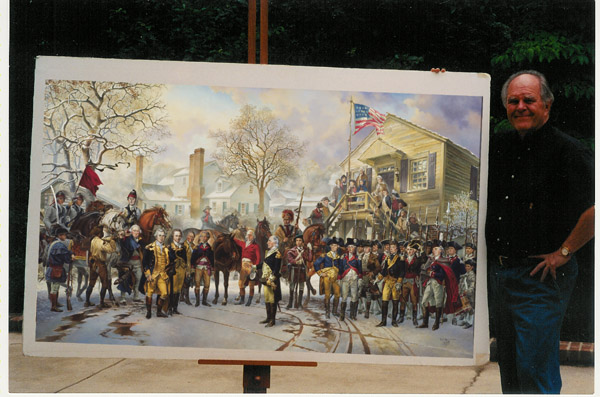By Werner Willis


Unstretched SN Giclee Canvas Edition of 75 size 60″ X 36″
Unstretched SN Giclee Canvas Edition of 350 size 40″ X 24″
SN Paper Giclee Edition of 200 24″ X 14 3/8″
The Change of Command
Charlotte, North Carolina 1780
On May 12, 1780, General Benjamin Lincoln surrendered the Southern army and the city of Charleston, South Carolina, to Sir Henry Clinton and Lord Cornwallis, commanders of the British forces. The Continental Congress sent a new army, led by General Horatio Gates, to halt the British advances.
Known as the “Hero of Saratoga,” Gates had been credited for the victory when the honor should have gone to his officers and men. Unable to defeat the British on August 16, 1780, in Camden, South Carolina, Gates deserted his army and galloped his horse to Charlotte, North Carolina, in less than a day.
When the news of this scandalous behavior reached the Continental Congress, immediate action was taken to replace General Gates. George Washington sent General Nathanael Greene, an accomplished and capable commander known as the “Fighting Quaker” due to his religious upbringing.
The change of command took place with dignified politeness and without fanfare on the old Salisbury Road, now North Tryon Street, in front of the Mecklenburg Court House on December 3, 1780. Then General Greene set about the task of rebuilding “the shadow of an army” that would lead to the defeat of Cornwallis and the British forces at Yorktown.
Portraits of the officers taken from original paintings by C.W. Peale, Josef Grasi, Eliza Mirbel and Gilbert Stuart